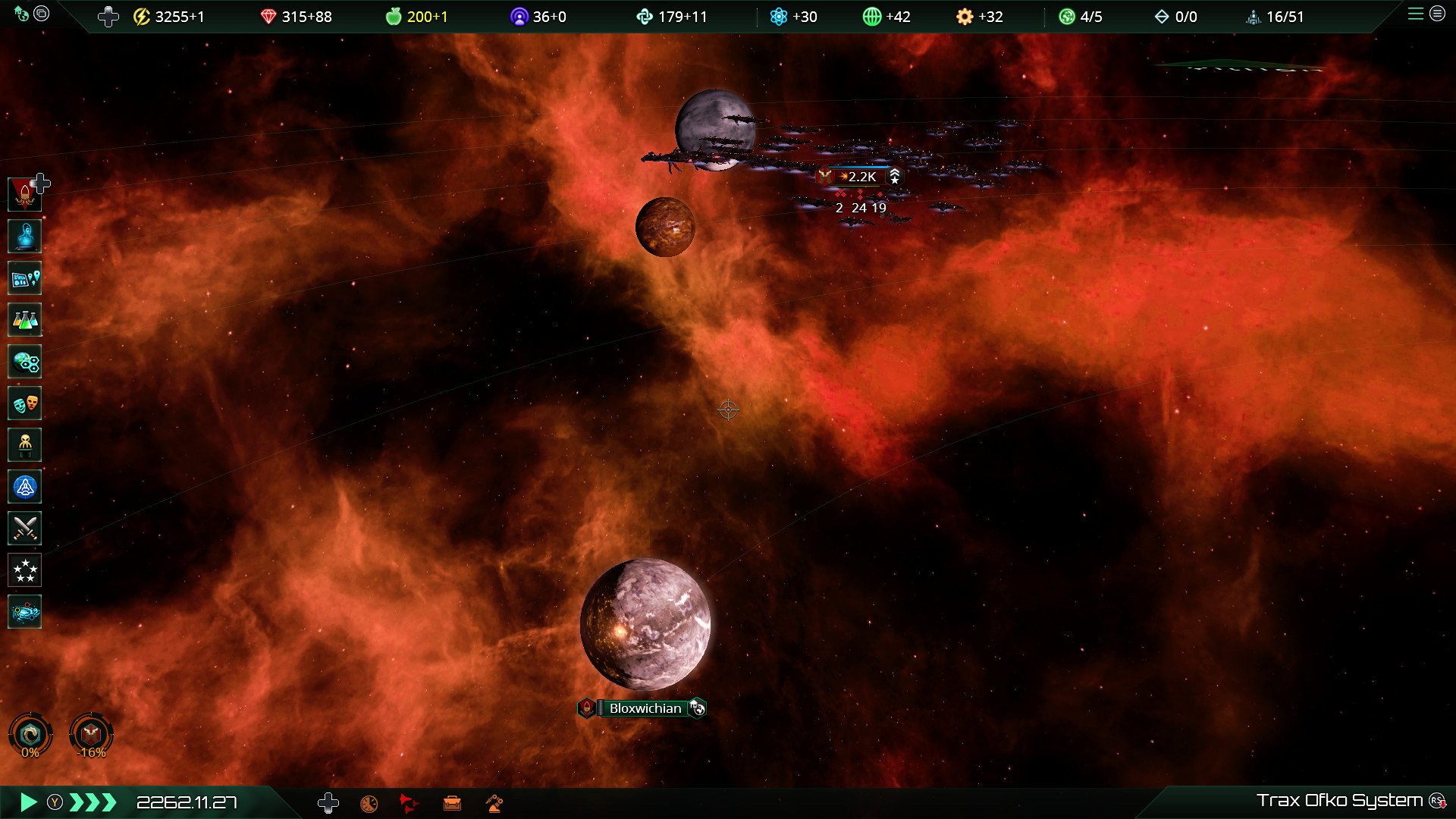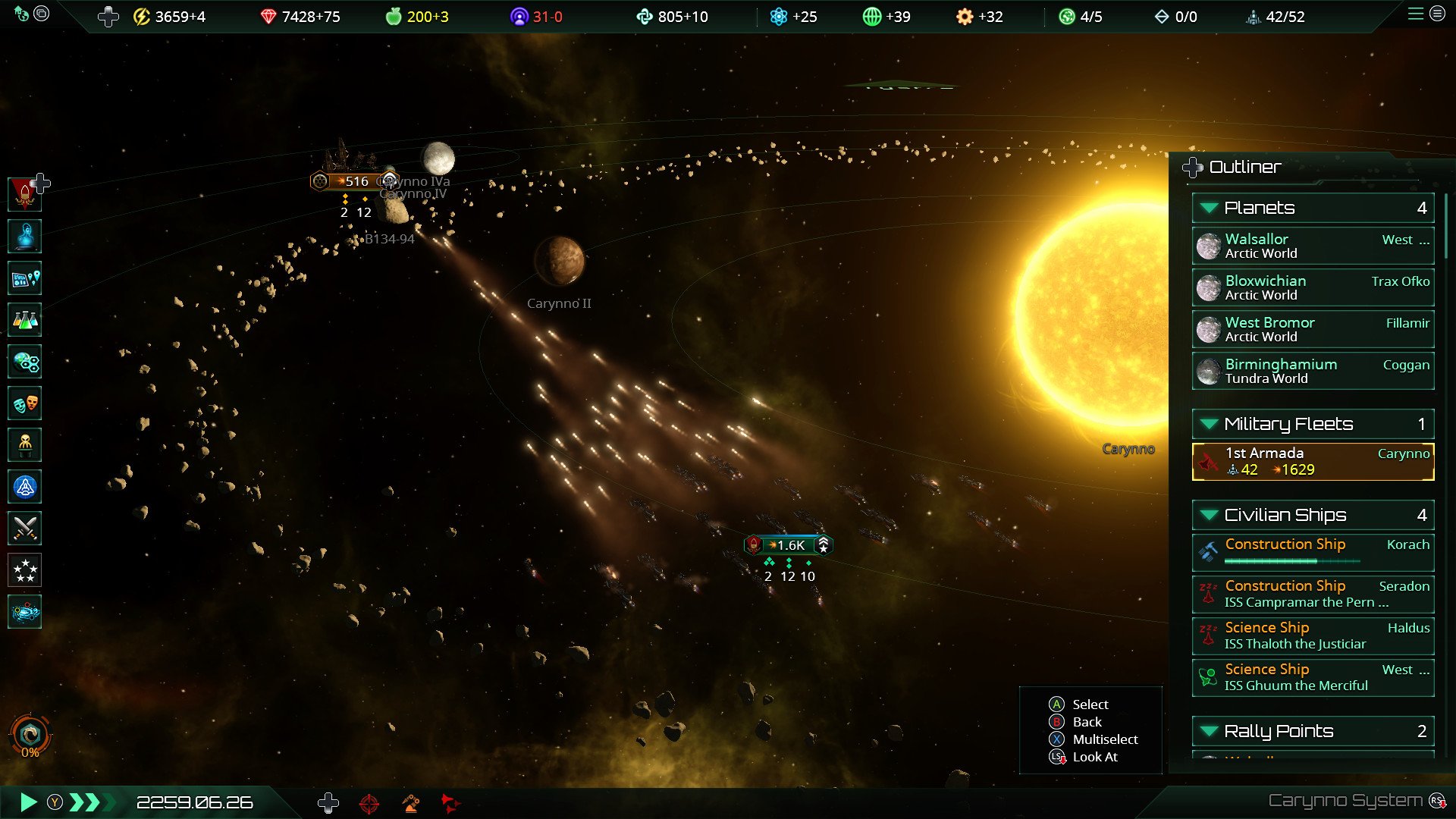
Stellaris is a deep sci-fi strategy game in which players are tasked with building their very own interstellar empires. Stellaris launched originally on PC a couple of years ago, and it has since gained a wealth of updates that have completely overhauled the game while adding tons of new free (and paid) features.
Stellaris makes its way to consoles in its "version 1.7" incarnation, missing out on some of the recent PC features like trade routes and planet-destroying weapons. Developer Paradox and its partners plan to bring the console version up to parity with the PC version in terms of updates and expansions in the coming months, opting to start at 1.7 as a base.
There's little question that Stellaris is an incredible 4X ("explore, expand, exploit, and exterminate") strategy game; the PC version is a testament to that already. But can all that complexity, designed for a mouse cursor, really be condensed into an enjoyable experience with a controller? Let's take a look.

$40Bottom line: This grand 4X strategy game is just as addictive on Xbox One as it is on PC.
For
- Same addictive gameplay as PC.
- Well-designed gamepad controls.
- Solid performance.
Against
- Visuals aren't nearly as impressive as PC.
- Mouse support is AWOL.
- Missing features from PC version, like multiplayer.
Visuals, sound, and performance
As of writing, Stellaris doesn't support the Xbox One X for higher resolutions or frame rates, sadly, clocking in at around 1080p resolution. However, compared to its PC counterpart, Stellaris on Xbox doesn't even match up to the visuals on my GTX 1060 Surface Book 2, with compressed textures and weak anti-aliasing. It's possible that Paradox and Tantalus have chosen to compress the visuals to offset Stellaris's notorious performance constraints as matches get increasingly complex, tracking hundreds of ships and other objects across the galaxy. If that's true, it was probably a smart decision, since Stellaris has pretty good performance.
If you can overlook the compressed visuals, Stellaris still has some stunning art direction, with glittering lasers piercing through the void of space, orbiting unique planets and other types of celestial bodies. Stellaris's dozens of ship and weapon combinations are just as satisfying to customize as they are in the PC version. Watching my fungoid cruisers spread out in formation and blast my enemies into oblivion in slow motion is always a joy.
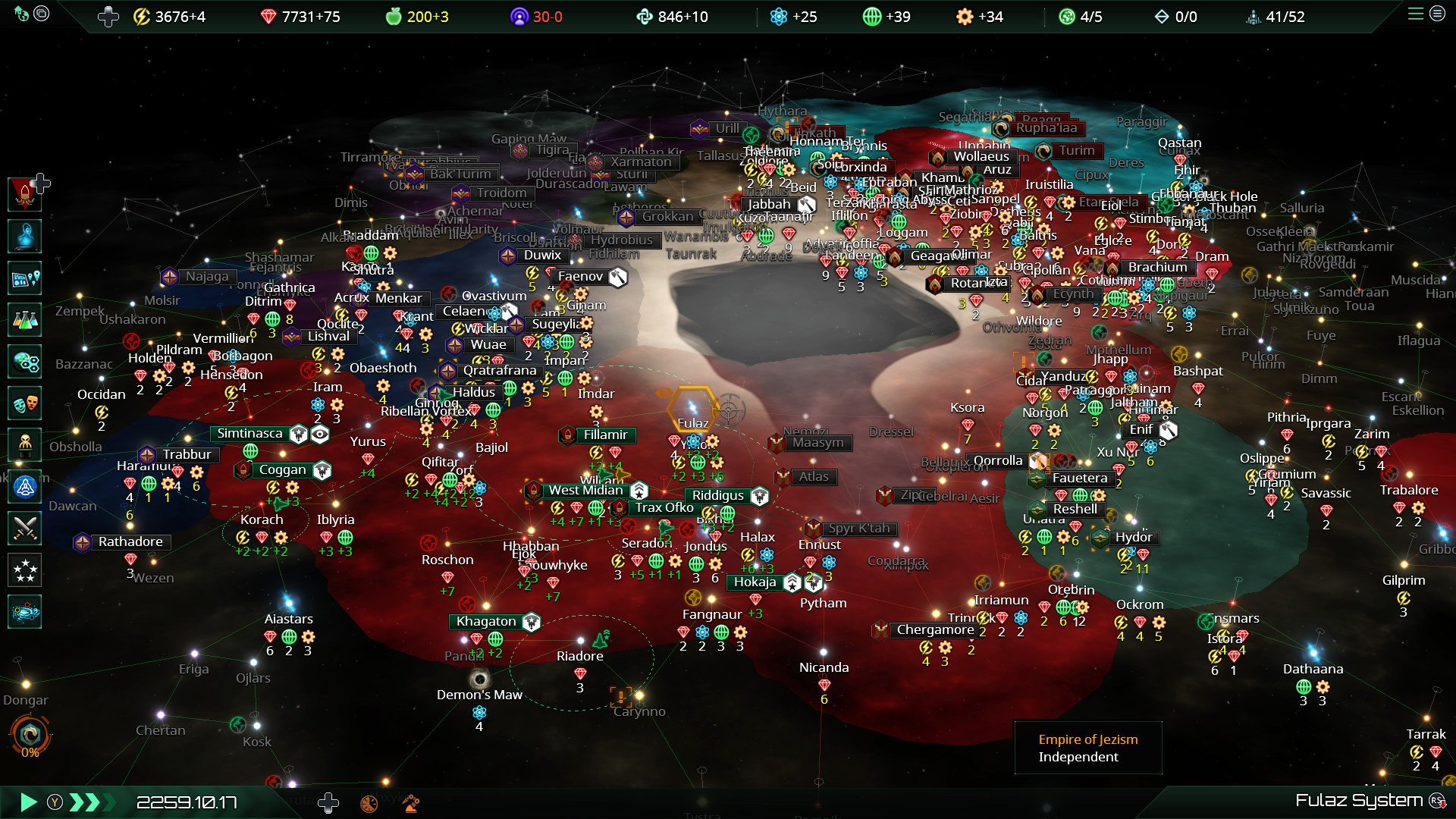
Much of Stellaris's sci-fi soundtrack makes the quantum leap from PC, too, adding some much needed intergalactic ambiance to the proceedings. However, there seems to be some kind of audio bug when you zoom into the map too closely, giving you increasingly loud planetary sound effects to unbearable levels. It'll probably be fixed in time for launch, but it's something to be aware of if you're wearing headphones.
Gameplay
Stellaris is a strategy game through and through, although you can tailor your experience to quite a large degree. The only way to earn achievements is to enable "Iron Man Mode," which saves periodically and won't allow you to "save scum," loading previous saves if you feel like you made a poor decision. Your choices throughout the game, the alliances you make, and the rivalries you cultivate, will impact your ability to thrive in your randomly-generated star cluster.
You start off with a single planet, after tailoring an empire's aesthetics and ethics. Want to be a xenophobic slaver? You can. Science-pursuing pacifist? Sure. Militarist dictator? Totally cool. And even more empire types will arrive later as part of downloadable content (DLC) expansions, such as the recent galactic corporation empires on PC.
As you begin tailoring your empire and expanding to colonize other planets, the game will throw mild story events and other random occurrences at you, demanding your attention. Some of them are relatively minor, and may reward some resources, while others will be pivotal to your current playthrough, featuring invading alien fleets or other threats. Building up a powerful empire, whether via your own naval might or through alliances, is critical to obtaining a playthrough's victory conditions.
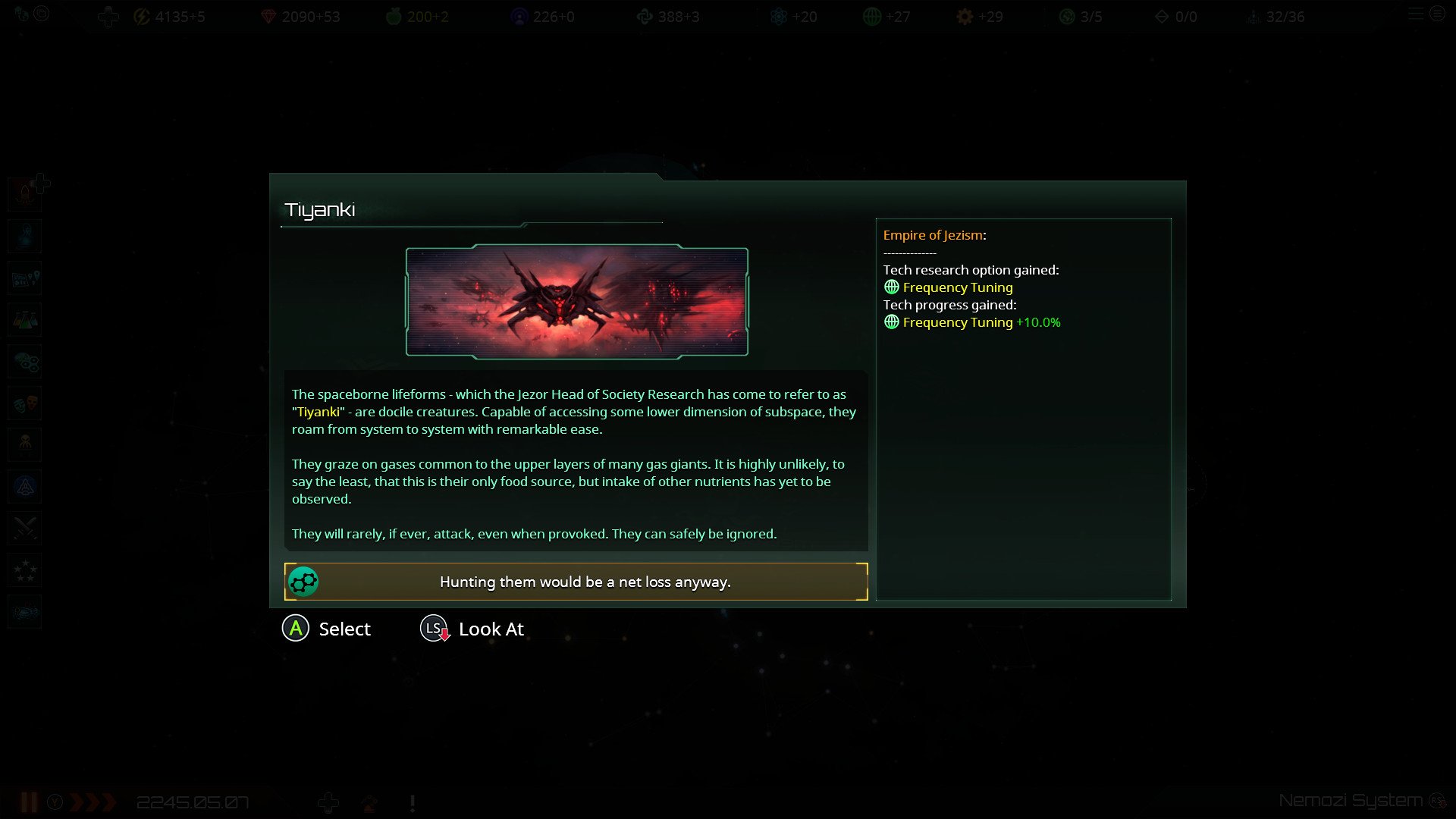
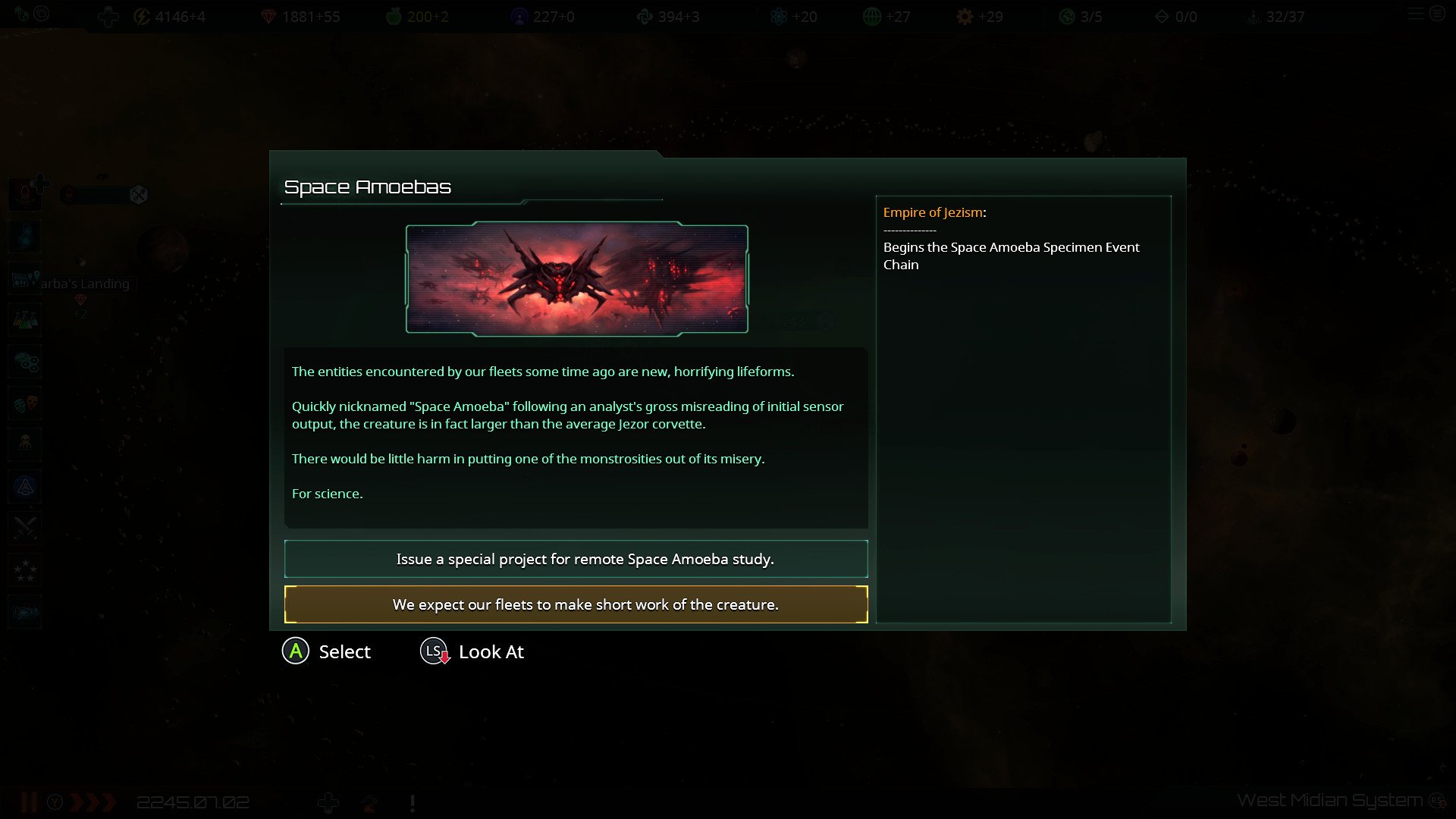
Stellaris 1.7 misses out on some of the modern game's refinements, particularly when it comes to expansion and fleet design. In Stellaris on console, naval combat is effectively a battle of whose fleet is the biggest and most advanced, dictated by the power number attached to any particular fleet.
The level of involvement required, alongside micromanagement, depends on the difficulty settings you choose for yourself. You can battle it out in a large world full of advanced AI, or take a more passive approach with more simple foes. Depending on your experience, you may want to go in on the easy end to learn the game's systems and complexities, and, indeed, get to grips with its controls.
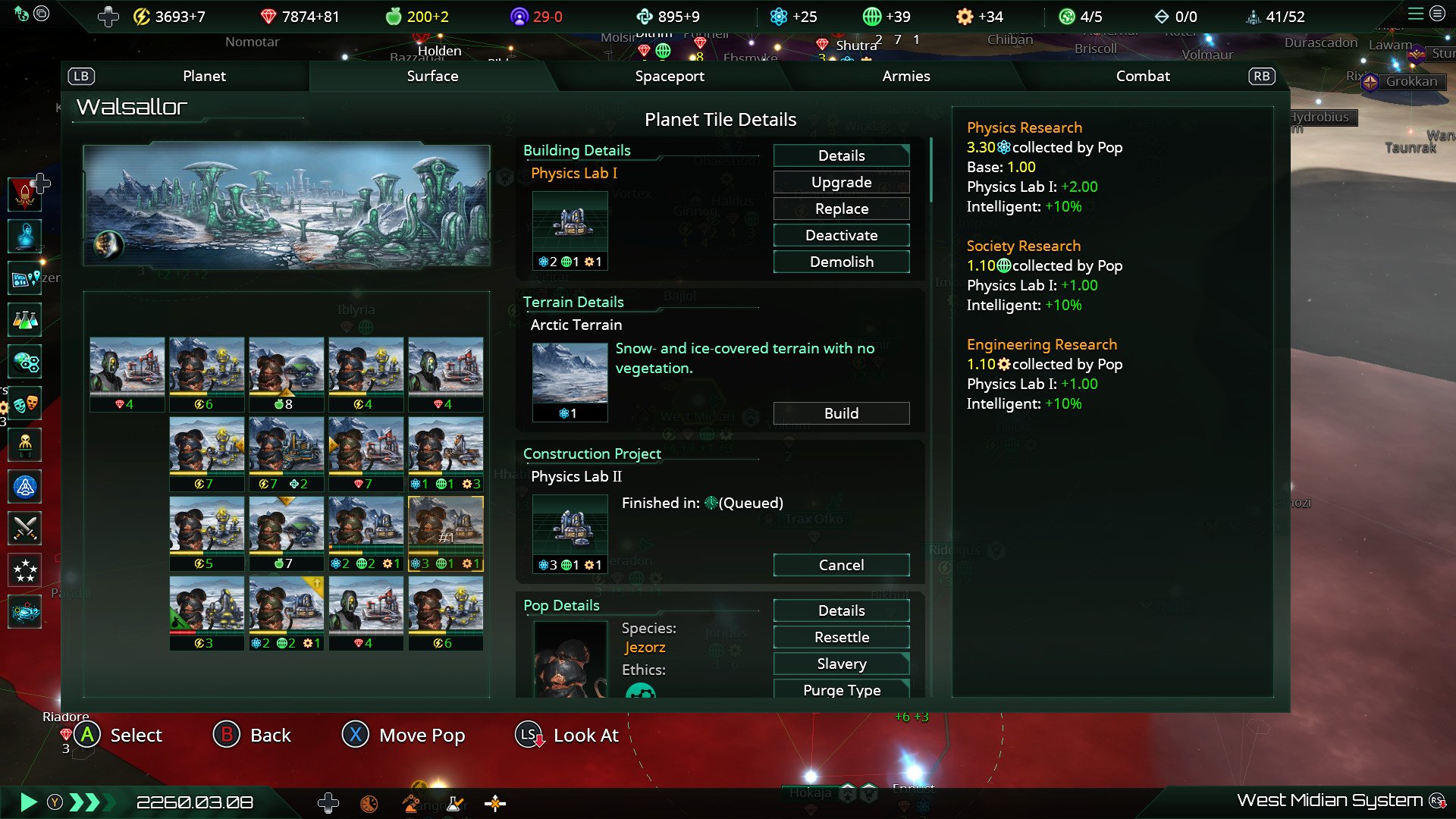
Stellaris is a menu-heavy game on PC, with menus for everything from planetary management, space station management, fleet control, fleet design, research screens, diplomacy contacts, and much more. Navigating them with a mouse is clearly the most obvious, most intuitive option, but Stellaris on Xbox One doesn't (yet) support mouse inputs. Instead, it uses a combination of d-pad element snapping and a joystick-bound cursor. For the most part, it works quite well.
Stellaris manages to get almost all of its complexity into the Xbox version, without sacrificing depth.
From the top level you can press one of the d-pad directions to snap to any one of the primary toolbars, with the UI displaying prominently which controls you need to use for each part of the system UI. The joystick is primarily used for navigating the map itself, while the d-pad moves the cursor around menus and toolbars.
The cursor also has an intuitive indicator that lets you select by moving the cursor near an object, although it can get difficult when there are many objects and planets stacked up in a tight space. (It's even a bit difficult on PC.)
Where Stellaris could probably improve the UI the most is with more visual cues to let you know which level menu you're on. Sometimes it's not obvious when you're trying to select your resource bar that you might already have a ship selected, preventing you from achieving your desired command. However, it's fairly easy to get used to, especially if you're someone who is accustomed to the interface on PC because it's largely the same.
It's impressive that Stellaris manages to get almost all of its complexity condensed down into the Xbox version, without sacrificing any depth for controller use or the Xbox One's limited CPU.
So should you buy Stellaris on Xbox One?
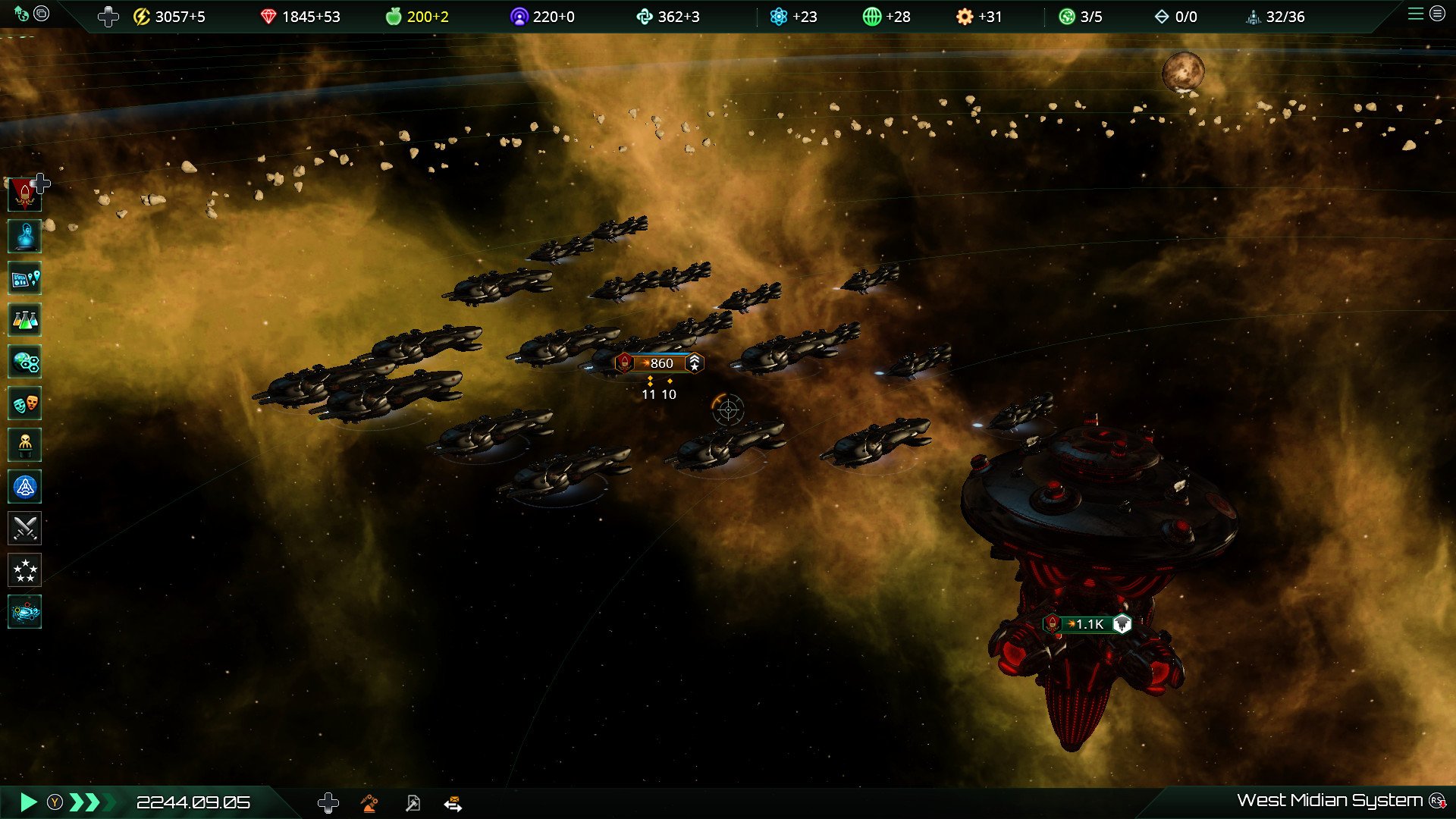
Stellaris is the best game of its type on Xbox One. If you like grand 4X strategy games with a heap of complexity, story events, and all sorts of dynamic intersecting systems then look no further. Stellaris is maddeningly addictive on PC, and it's just as infectious on Xbox One, as you gradually grow your space-faring ambitions from your local system to the entire cluster.
Stellaris on Xbox One is nowhere near as visually impressive as it is on PC, and it's missing many of the refinements and updates PC players enjoy today. It should eventually catch up, though, and if you're jumping into Stellaris for the first time, version 1.7 on Xbox One is a pretty awesome starting point. Although it's a shame multiplayer didn't make its way across from PC.
Stellaris is a personal favorite, and it's great to see it make the leap to Xbox One, but Paradox and its partners could really seal the deal by bringing across mouse support, which the Xbox One now has. Hopefully we'll see it materialize down the line, but for now, the gamepad controls are pretty great as is.
Stellaris really is one of those "just 10 more minutes" types of games that could keep you awake at ridiculous hours, if you let it.

Jez Corden is the Executive Editor at Windows Central, focusing primarily on all things Xbox and gaming. Jez is known for breaking exclusive news and analysis as relates to the Microsoft ecosystem while being powered by tea. Follow on Twitter (X) and Threads, and listen to his XB2 Podcast, all about, you guessed it, Xbox!
